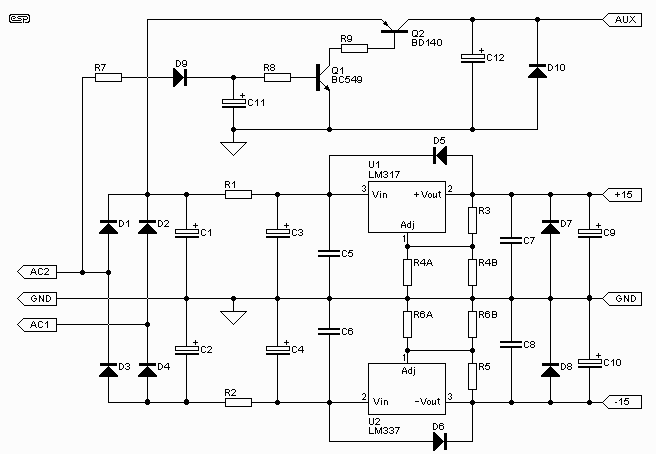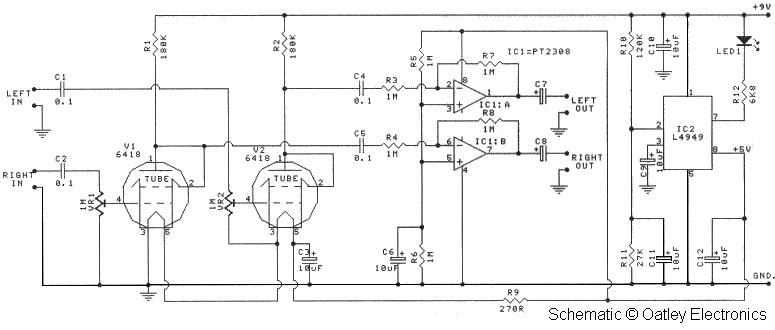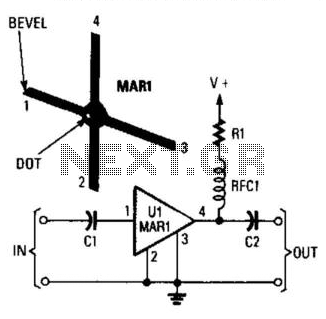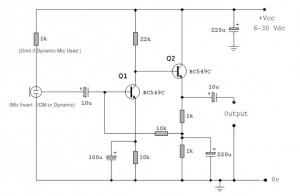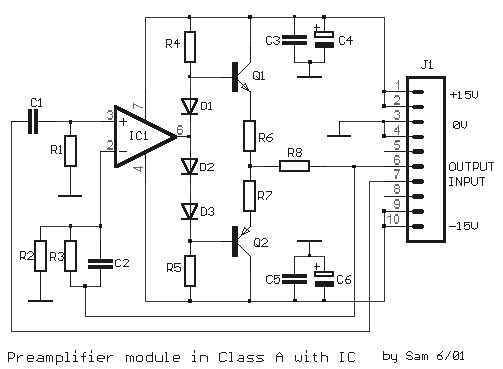
Instrumentation amplifier
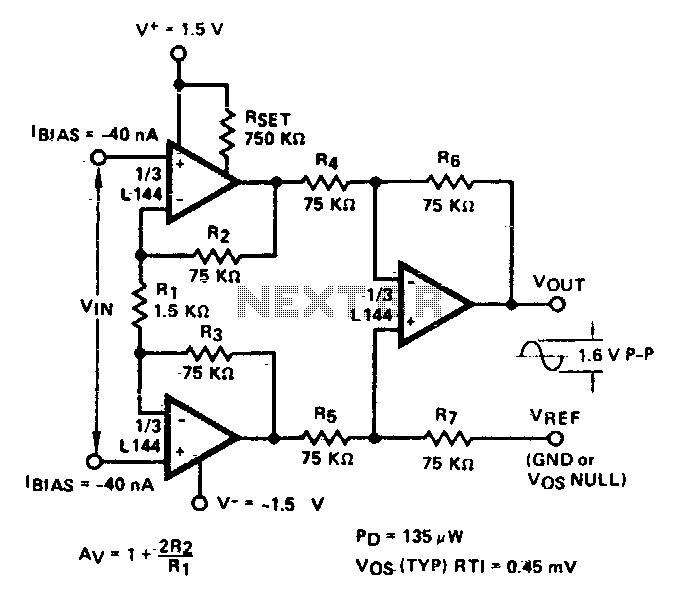
A three-amplifier circuit consumes only 135 µW of power from a ±1 V power supply. With a gain of 101, the instrumentation amplifier is ideal for sensor interface and biomedical preamplifier applications. The first stage provides all of the gain, while the second stage is used to provide common mode rejection and convert from double-ended to single-ended signals.
The described three-amplifier circuit is an instrumentation amplifier designed for low-power applications, particularly in sensor interfacing and biomedical signal processing. The circuit operates with a low power consumption of 135 µW from a dual power supply of ±1 V, making it suitable for battery-operated devices and portable applications.
The first stage of the amplifier is crucial as it is responsible for providing the majority of the gain, achieving a gain factor of 101. This high gain is essential for amplifying small signals, such as those from sensors or biological signals, which may be in the millivolt range. The configuration of the first stage typically consists of a differential amplifier that enhances the input signal while rejecting any common-mode noise that may be present.
Following the first stage, the second stage serves two primary functions: it enhances common-mode rejection and performs the conversion from a double-ended signal to a single-ended output. Common-mode rejection is vital in ensuring that any noise or interference that affects both input lines equally is minimized, allowing for a cleaner output signal. The conversion from double-ended to single-ended is essential for compatibility with subsequent signal processing stages, which often require a single-ended input.
Overall, this instrumentation amplifier configuration is highly effective in applications where precision and low power consumption are critical, such as in medical devices, environmental monitoring systems, and other sensor-based applications. The careful design of each stage ensures optimal performance in terms of gain, noise rejection, and power efficiency.Three-amplifier circuit consumes only 135 /tW of power from a ±1 V power supply. With a gain of 101, the instrumentation amplifier is ideal in sensor interface and biomedical preamplifier applications The first stage provides all of the gain while the second stage is used to. provide common mode rejection and double-ended to single-ended conversion.
The described three-amplifier circuit is an instrumentation amplifier designed for low-power applications, particularly in sensor interfacing and biomedical signal processing. The circuit operates with a low power consumption of 135 µW from a dual power supply of ±1 V, making it suitable for battery-operated devices and portable applications.
The first stage of the amplifier is crucial as it is responsible for providing the majority of the gain, achieving a gain factor of 101. This high gain is essential for amplifying small signals, such as those from sensors or biological signals, which may be in the millivolt range. The configuration of the first stage typically consists of a differential amplifier that enhances the input signal while rejecting any common-mode noise that may be present.
Following the first stage, the second stage serves two primary functions: it enhances common-mode rejection and performs the conversion from a double-ended signal to a single-ended output. Common-mode rejection is vital in ensuring that any noise or interference that affects both input lines equally is minimized, allowing for a cleaner output signal. The conversion from double-ended to single-ended is essential for compatibility with subsequent signal processing stages, which often require a single-ended input.
Overall, this instrumentation amplifier configuration is highly effective in applications where precision and low power consumption are critical, such as in medical devices, environmental monitoring systems, and other sensor-based applications. The careful design of each stage ensures optimal performance in terms of gain, noise rejection, and power efficiency.Three-amplifier circuit consumes only 135 /tW of power from a ±1 V power supply. With a gain of 101, the instrumentation amplifier is ideal in sensor interface and biomedical preamplifier applications The first stage provides all of the gain while the second stage is used to. provide common mode rejection and double-ended to single-ended conversion.
